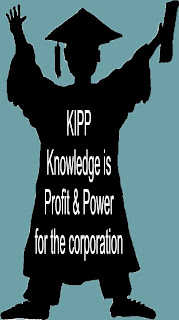KIPP Works
 It’s relatively obvious to anyone who looks that the Knowledge Is Power Program (KIPP), the nation’s largest charter management organization, produces results. Just by seeing its classrooms you start to figure this out: the students are in matching uniforms, they chant and seem energized about learning, and, other than the chants, they’re orderly and respectful. To prove that KIPP works mathematically, up until now we’ve had to rely on pretty low-level analyses that show very high numbers of their students pass state accountability exams.
It’s relatively obvious to anyone who looks that the Knowledge Is Power Program (KIPP), the nation’s largest charter management organization, produces results. Just by seeing its classrooms you start to figure this out: the students are in matching uniforms, they chant and seem energized about learning, and, other than the chants, they’re orderly and respectful. To prove that KIPP works mathematically, up until now we’ve had to rely on pretty low-level analyses that show very high numbers of their students pass state accountability exams. A new, rigorous analysis for the National Bureau of Economic Research changes that. Using a quasi-experimental research design that capitalizes on the large number of students applying to get into but ultimately rejected from one KIPP school in Lynn, Massachusetts, the researchers were able to compare students who entered the school with those who wanted to attend but were rejected due to space restrictions. This design helps the researchers isolate KIPP attendance from motivation, parental education, environmental factors, or any other variable that might be difficult to detect.
A new, rigorous analysis for the National Bureau of Economic Research changes that. Using a quasi-experimental research design that capitalizes on the large number of students applying to get into but ultimately rejected from one KIPP school in Lynn, Massachusetts, the researchers were able to compare students who entered the school with those who wanted to attend but were rejected due to space restrictions. This design helps the researchers isolate KIPP attendance from motivation, parental education, environmental factors, or any other variable that might be difficult to detect.After these controls, KIPP attendees gained .35 of a standard deviation every year in math and .12 standard deviations each year in English. Results were even more positive for Limited English Proficiency and special education students (the demographics of KIPP Lynn lottery winners matched lottery losers and the district as a whole).
These demographic factors are important. KIPP is often accused of “skimming” the most talented or motivated public school students. Under that theory, which the paper debunks, KIPP could have a high percentage of low-income and minority students but attract the best of these groups. The research design of this paper allows the authors to conclude that’s not happening, at least in KIPP Lynn.

